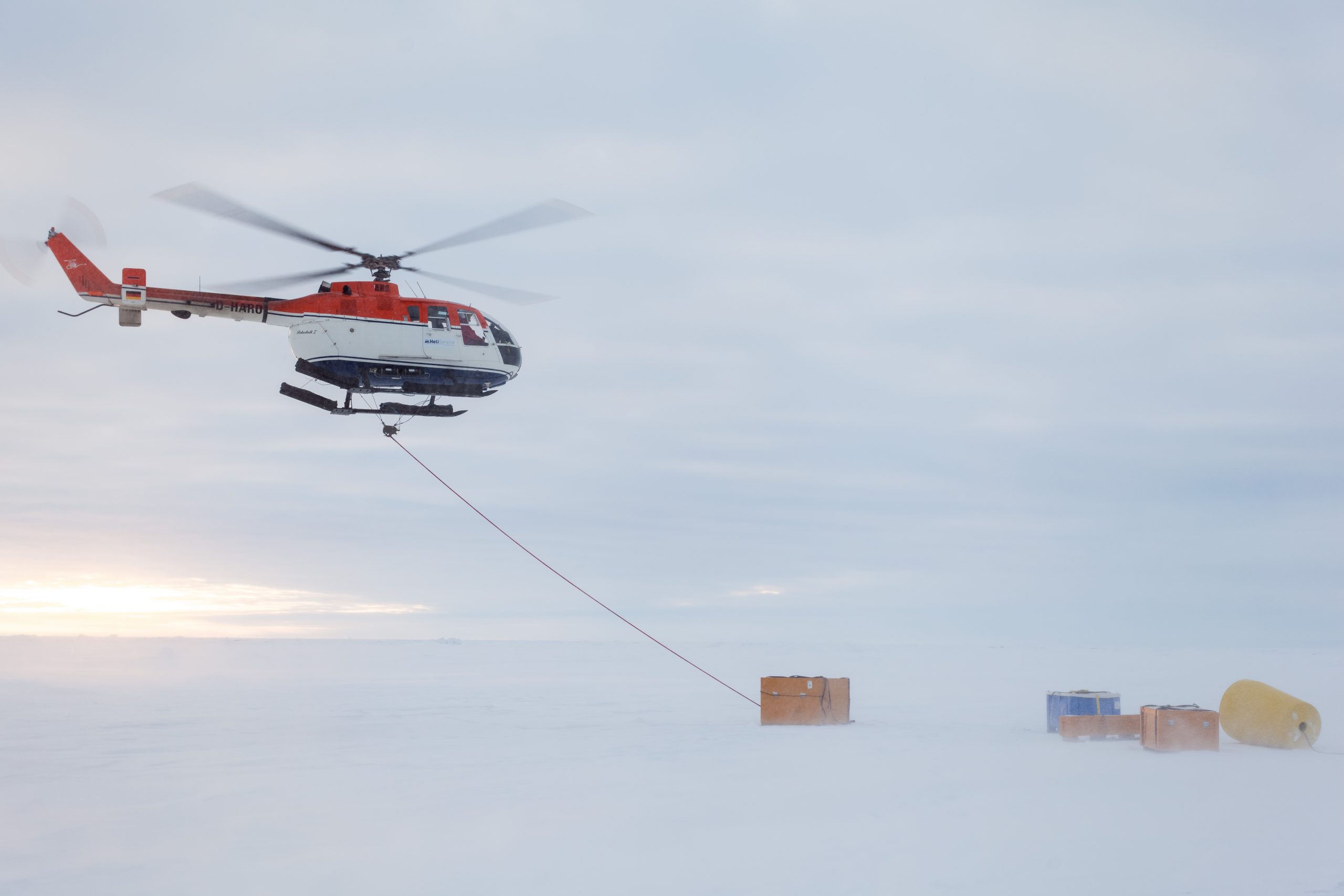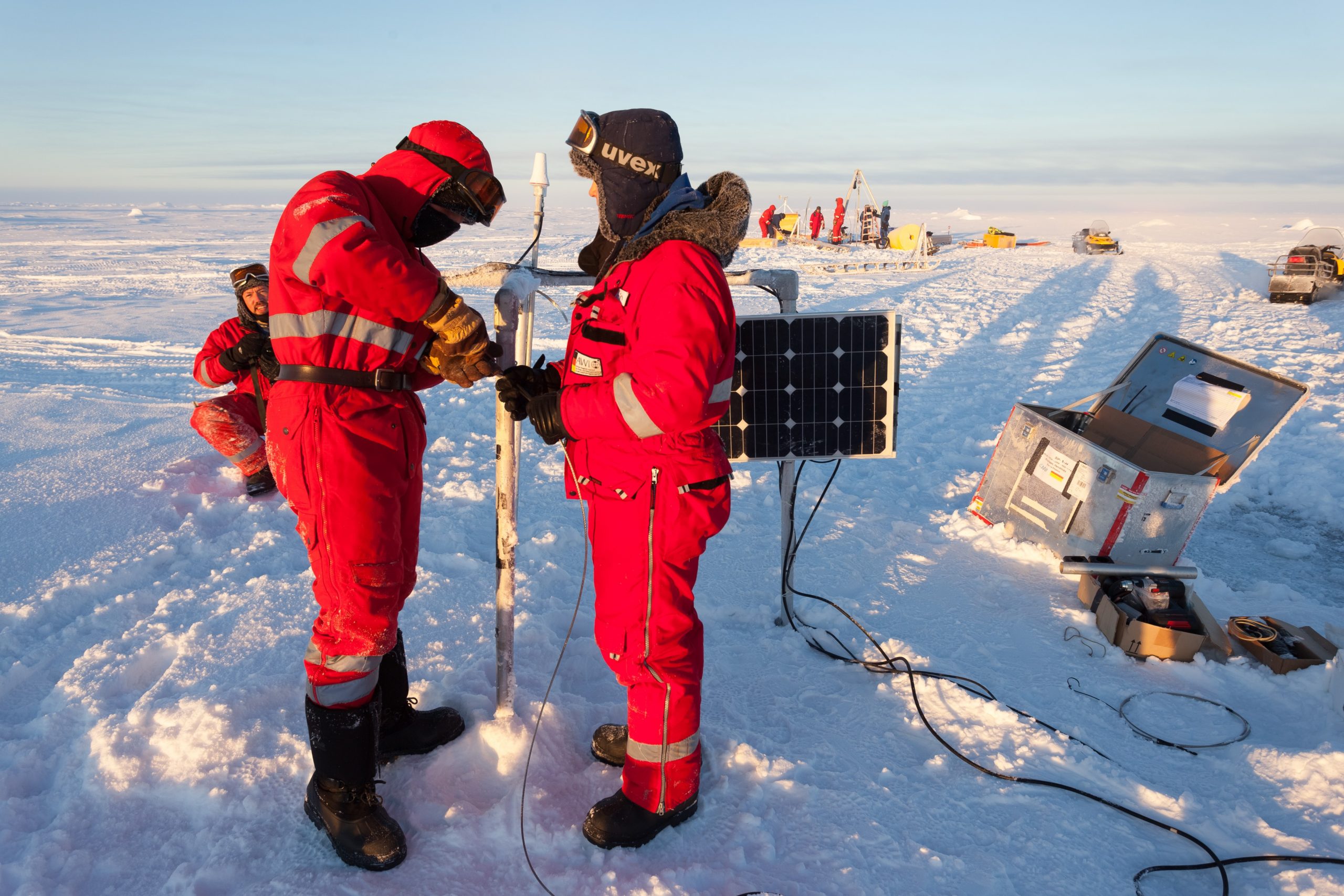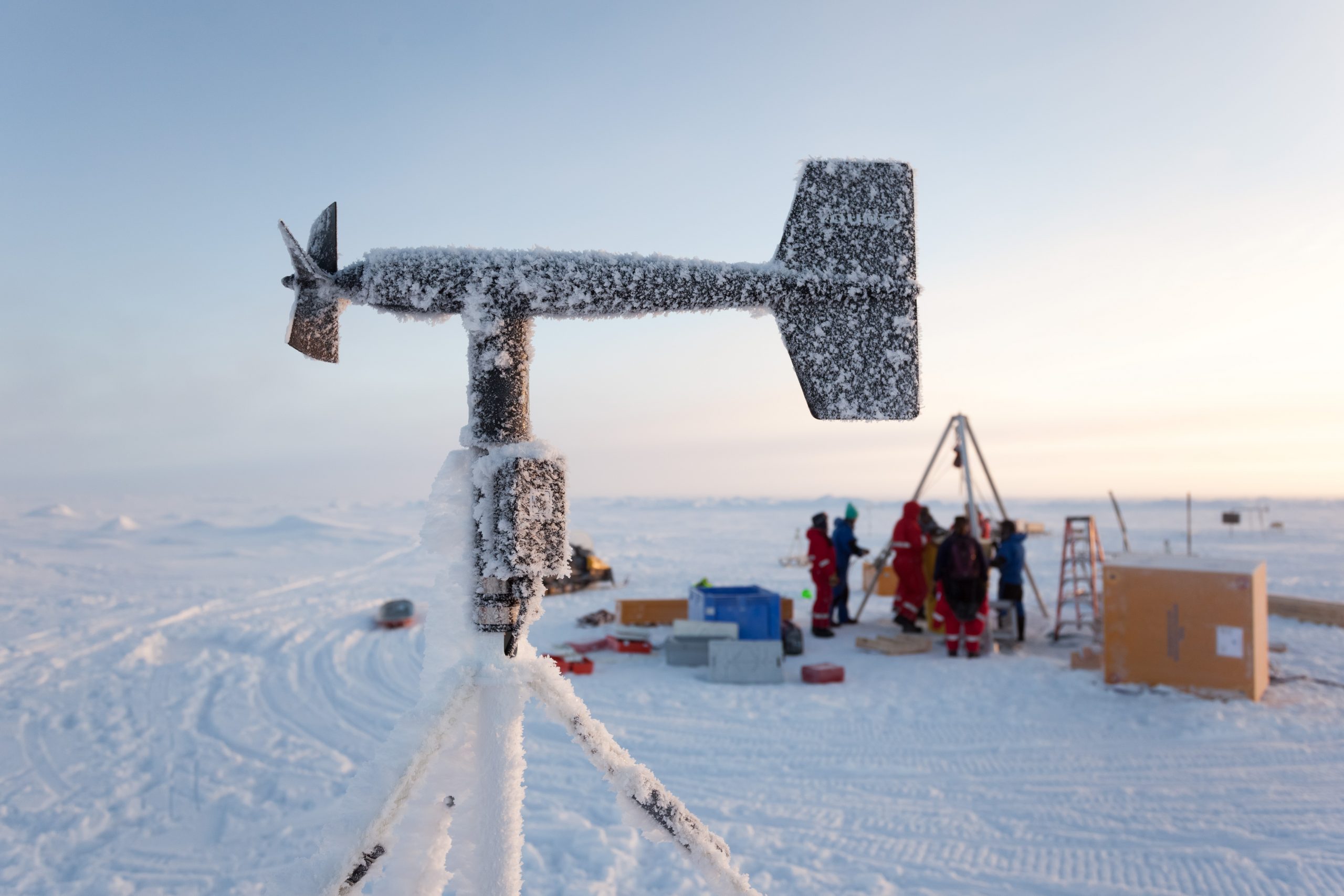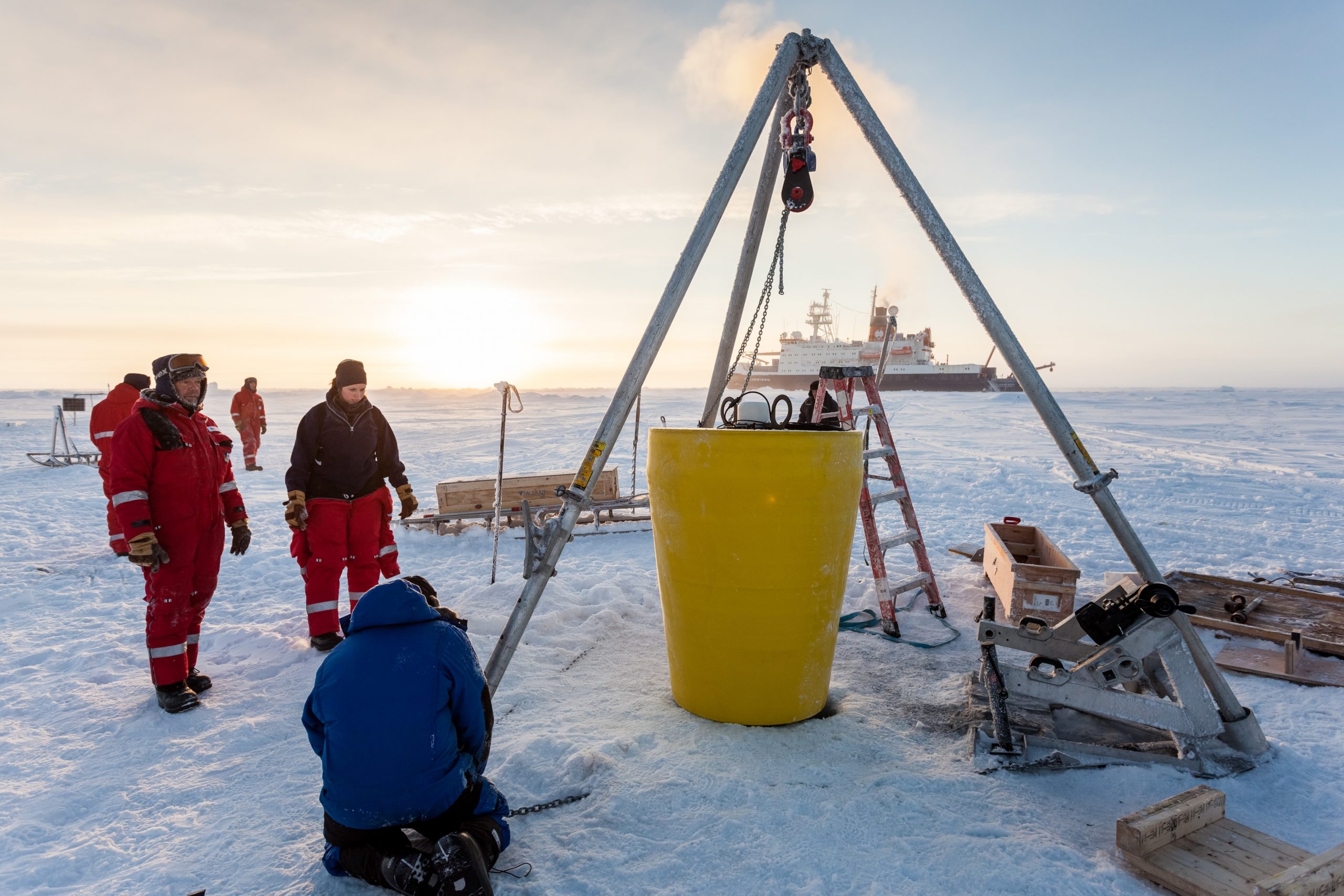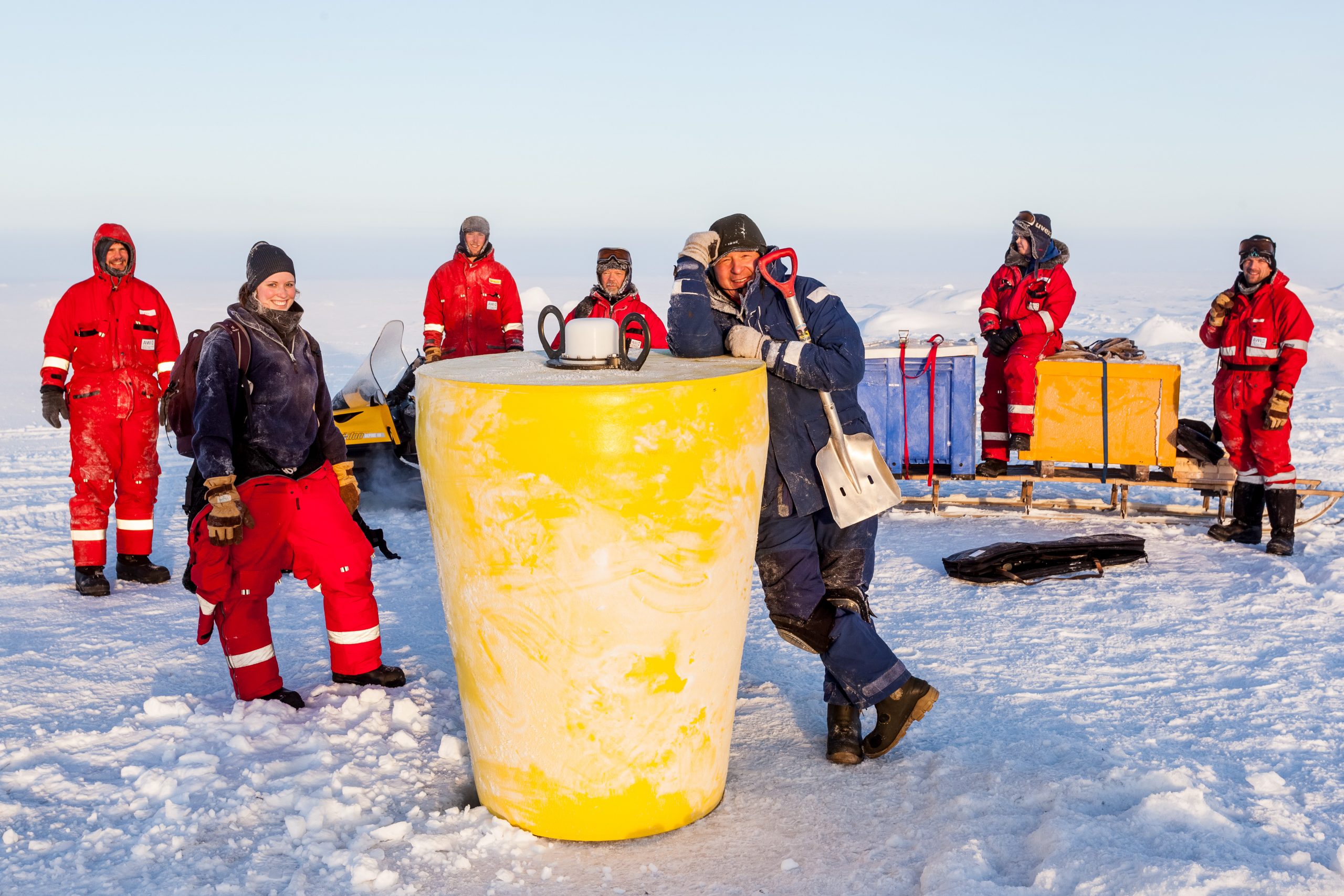ITP 93 Deployment
ITP 93 was deployed as part of an Ice-Based Observatory during the Transarc II expedition (also referred to as PS94 or ARK-XXIX/3) on the R/V Polarstern. Scientists from the Alfred-Wegener-Institute (Germany), the Shirshov Institute of Oceanology (Russia), The Finnish Meteorological Institute and L’Ocean France contributed to the deployments of the ice based instruments during the expedition.
After a helicopter ice-reconnaissance flight in nice weather conditions, the ship was maneuvered alongside a large floe, where it should anchor for the next 20 hours. A quick visual inspection of the floe for a suitable spot to deploy several sea-ice buoys revealed an area of apparently thicker ice towards the middle of the floe. The first group of four scientists went out on the floe to convey an ice thickness survey by an electromagnetic method at around 9 o’clock AM. The survey confirmed the suitability of the spot for a longer-lasting deployment, with ice thicknesses ranging between 1.2 and 2 m. Based on the experiences of the last ice stations with partly desolate ice conditions, such large thicknesses were clearly on the top end the range.
The ITP deployment gear was in the meantime prepared on the Helideck to be transported to the site via helicopter. Half an hour and 5 flights later, the gear was ready for assembly. A group of 5 scientists and technicians drilled a jiffy hole, and mounted the tripod and winch without further difficulties. However, when the profiler was later taken to the site, the first attempts to lower it through the hole unfortunately failed. We couldn’t really figure out why that was the case, but also the subsequent tries failed.
In parallel, a SAMS thermistor chain IMB and a Metocean snow height beacon were deployed about 50 m from the ITP. We had some problems identifying a suitable spot for these instruments, since that area had also several melt ponds which were covered by snow. A Metocean PAWS was deployed at around 10 m from the ITP.
In the meantime the weather got worse, with visibility reducing drastically. All ice work was paused for several hours, until the weather cleared up again. In the evening we were able to go out on the floe again, continuing the deployment in a nice and sunny atmosphere. During the few hours we were on the ship, a large amount of frost grew onto the other buoys.
We enlarged the ITP hole was enlarged with the jiffy and some additional tools, bevor we finally managed to get the profiler in the water. The modem test caused some trouble at first, because our Toughbook succumbed to the cold. After organizing another computer, the test was successful. We all applauded and gathered the deployment gear. We took a group photo and deployed another buoy with three spectral radiometers near the IMB site, before finally returning to the ship.
